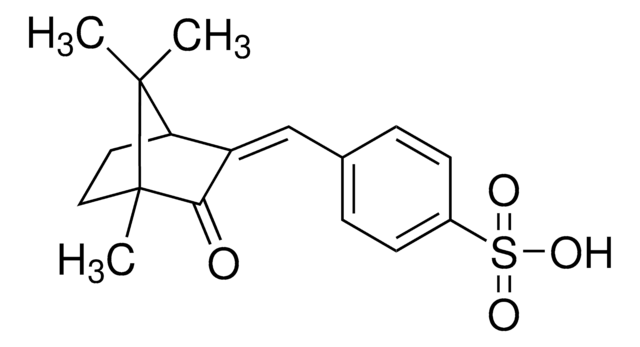This product has not been specifically tested for suitability in SCSA and sperm DNA structure assays. However, there are a number of publications that have used this product for such applications. A thorough review of the literature is recommended. Please see the link below to review one such publication:
https://www.sciencedirect.com/science/article/pii/S0188440901003289
A6014
Acridine Orange hemi(zinc chloride) salt
For nucleic acid staining in cells or gels
Synonyme(s) :
3,6-Bis(dimethylamino)acridine hydrochloride zinc chloride double salt, 3,6-Bis(dimethylamino)acridinium chloride hemi(zinc chloride salt), Basic Orange 14
Sélectionner une taille de conditionnement
128,00 $
Sélectionner une taille de conditionnement
About This Item
128,00 $
Produits recommandés
Niveau de qualité
Gamme de produits
BioReagent
Forme
powder
Composition
Dye content, ~80%
Technique(s)
nucleic acid detection: suitable
Solubilité
ethanol: 2 mg/mL
4 mg/mL (2-methoxyethanol (EGME))
water: 6 mg/mL (Forms a clear, dark orange or amber solution at 1mg/mL.)
Adéquation
suitable for flow cytometry
suitable for microscopy
Température de stockage
room temp
Chaîne SMILES
Cl[H].Cl[H].Cl[Zn]Cl.CN(C)c1ccc2cc3ccc(cc3nc2c1)N(C)C.CN(C)c4ccc5cc6ccc(cc6nc5c4)N(C)C
InChI
1S/2C17H19N3.4ClH.Zn/c2*1-19(2)14-7-5-12-9-13-6-8-15(20(3)4)11-17(13)18-16(12)10-14;;;;;/h2*5-11H,1-4H3;4*1H;/q;;;;;;+2/p-2
Clé InChI
RAHGLSRJKRXOSY-UHFFFAOYSA-L
Vous recherchez des produits similaires ? Visite Guide de comparaison des produits
Description générale
Application
- detection of nucleic acids separated by gel electrophoresis
- fluorescence and epifluorescence microscopy
- analysis of mitochondria and lysosomes by flow cytometry
- DNA staining in apoptosis studies
Caractéristiques et avantages
- 120 microM of acridine orange detects 25-50 ng of purified DNA per band in gels
- differential staining of single- and double-stranded polynucleotides
Principe
Produit(s) apparenté(s)
Mention d'avertissement
Warning
Mentions de danger
Conseils de prudence
Classification des risques
Muta. 2
Code de la classe de stockage
11 - Combustible Solids
Classe de danger pour l'eau (WGK)
WGK 3
Point d'éclair (°F)
Not applicable
Point d'éclair (°C)
Not applicable
Équipement de protection individuelle
Eyeshields, Gloves, type N95 (US)
Faites votre choix parmi les versions les plus récentes :
Déjà en possession de ce produit ?
Retrouvez la documentation relative aux produits que vous avez récemment achetés dans la Bibliothèque de documents.
Les clients ont également consulté
Articles
Fluorescence lifetime measurement is advantageous over intensity-based measurements. Applications include fluorescence lifetime assays, sensing and FLI.
-
Is product A6014, Acridine Orange hemi(zinc chloride) salt, used for sperm chromatin structure assay (SCSA) and sperm DNA structure assay?
1 answer-
Helpful?
-
Active Filters
Notre équipe de scientifiques dispose d'une expérience dans tous les secteurs de la recherche, notamment en sciences de la vie, science des matériaux, synthèse chimique, chromatographie, analyse et dans de nombreux autres domaines..
Contacter notre Service technique












